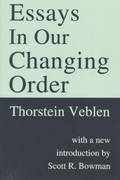Question
A major association representing the music industry in the United States has determined that 4,000 copies of a new album featuring a popular rock group,
A major association representing the music industry in the United States has determined that 4,000 copies of a new album featuring a popular rock group, called DUO, had been illegally downloaded last month. The cost of this album for those who elect to download it legally from online music stores is $10 per copy.The association concludes that the music company that holds the copyright to this album lost $40,000 dollars in revenue last month (on that album alone). Please follow the seven-step process. The seven-step process is:
Step 1. Convert the argument into standard form. (List the premises followed by the conclusion.)
Step 2. Test the argument for its strength of reasoning to see whether it is valid or invalid. Strategy: Assume the premises to be true and ask yourself whether the conclusion must also be true when those premises are assumed true. Is a counterexample to the argument possible?
Step 3. Is the argument valid? If yes, go to Step 4. If no, go to Step 5.
Step 4 .Is the (valid) argument also sound? That is, are the premises true in the actual world? Strategy: To determine whether a claim is true or false in the actual world, see the guidelines in Appendix G (Available at www.wiley.com/college/tavani).If the argument is valid and if all of the premises are true in the actual world, then the argument is also sound. If the argument is valid, but one or more premises can be shown to be false, then the argument is unsound. (Note that if one or more premises are unable to be verified, i.e., determined to be either true or false, then the overall argument is inconclusive.)
Step 5. Is the (invalid) argument inductive or fallacious? Strategy: To determine this, ask how likely the conclusion would be true when the premises are assumed true. If the conclusion would likely be true because the premises are assumed true (i.e., the evidence for the conclusion is strong), the argument is inductive. If the conclusion would not likely be true even when the premises are assumed true, the argument is fallacious. Note: Keep in mind that a fallacious argument can be made up of individual claims or statements that are themselves true in the actual world.
Step 6. Determine whether the premises in your argument are either true or false in the actual world. Strategy: Consult the guidelines for determining the truth or falsity of statements in Appendix G (available at www.wiley.com/college/tavani).
Step 7. Make an overall assessment of the argument by determining both (i) the argument's strength of reasoning (valid, inductive, or fallacious) and (ii) the truth conditions of each of the argument's premises. Strategy: Determine, for example, whether the argument's overall strength is Sound Valid but unsound Inductive with all true premises Inductive with some false premises Fallacious with a mixture of true and false premises Some other combination Remember that an inductive argument with premises that are all true can be stronger overall than a valid argument with one or more false premises, which will be (valid but) unsound. NOTE: Other answer on C-h-e-g-g and this site about KPI etc, is incorrect.
Step by Step Solution
There are 3 Steps involved in it
Step: 1

Get Instant Access to Expert-Tailored Solutions
See step-by-step solutions with expert insights and AI powered tools for academic success
Step: 2

Step: 3

Ace Your Homework with AI
Get the answers you need in no time with our AI-driven, step-by-step assistance
Get Started


